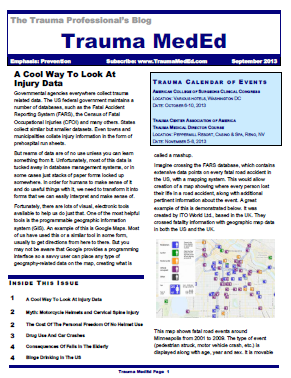I wrote about good, old-fashioned pagers yesterday. They are very old, yet reliable technology. But these days, smartphones are all the rage. People walk around everywhere, staring at them. Are they useful in a hospital setting?

These days, 90% or so of healthcare providers carry a smartphone. They can transmit and receive much more information than a pager ever could. Would trauma team members at a Level I US trauma center find them valuable? The University of Arizona, Tucson sent a questionnaire to surgeons, residents, and midlevel providers rotating through their trauma service asking them a series of 31 questions about use of these devices.
Here are the factoids:
- 50 people completed the survey, most of whom (40) were residents. It appears that everyone was forced to return it.
- 94% were in favor of using it for communications
- 78% found it easy to use and user friendly
- 98% believed that it improved speed and quality of communication
- 98% believed it improved the accessibility of team members
- 90% felt that it improved physician response time
- 4% believed that it could not be used due to HIPAA regulations
Bottom line: This is a good example of an unscientific study dressed up to look a little scientific. And it essentially confirms the bias of the researchers. Nonetheless, it is an indicator of where we’re heading with in-hospital and out-of-hospital communications. The days of good, old-fashioned pagers and walkie-talkies are rapidly waning. Smartphones, and whatever follows (Google Glass?), are rapidly replacing them. The only obstacles now are ensuring good signal strength deep inside hospital buildings, and being ever mindful of HIPAA requirements.
Related posts:
Reference: Improving communication in Level I trauma centers: replacing pagers with smartphones. Telemedicine and e-Health, 19(3):150-153, 2013.


